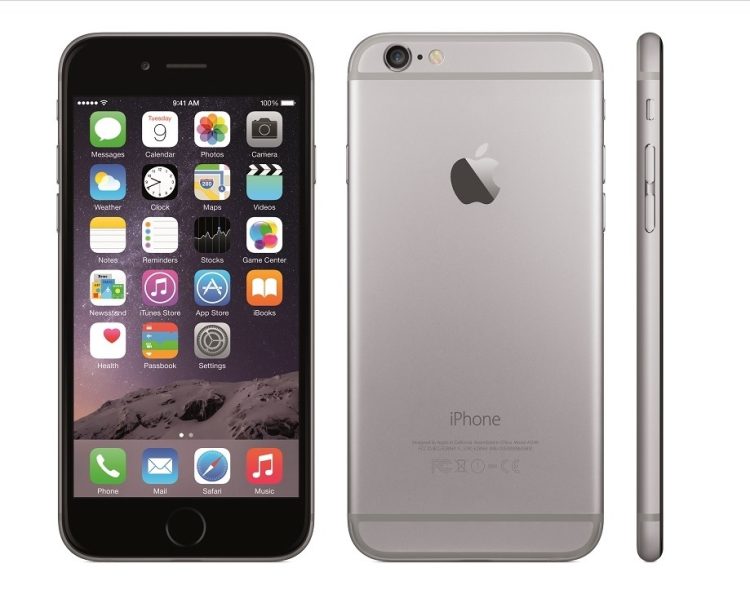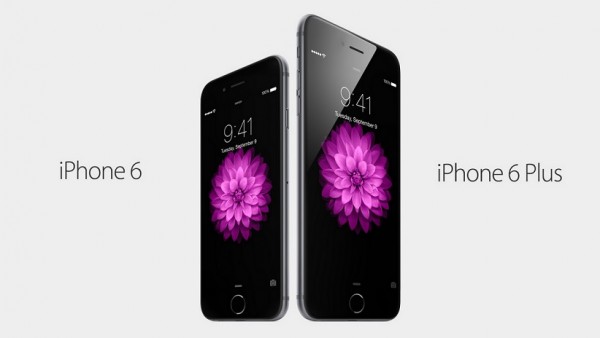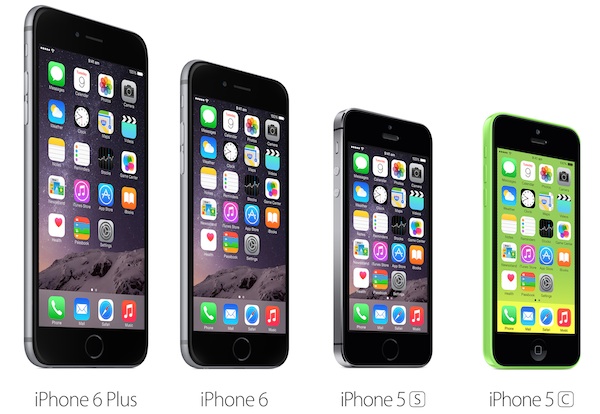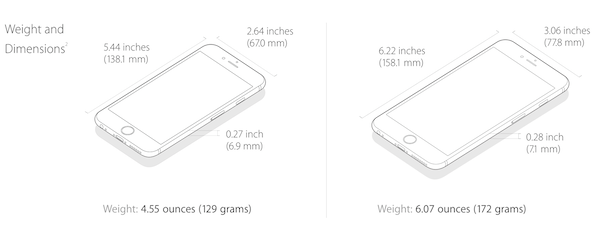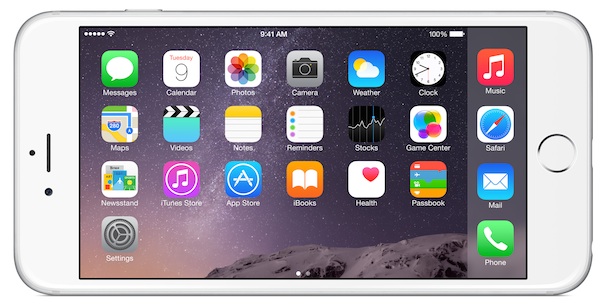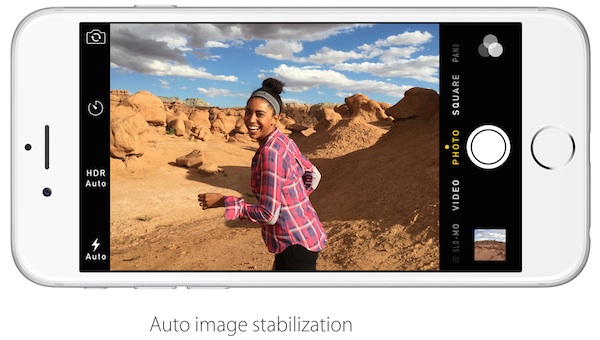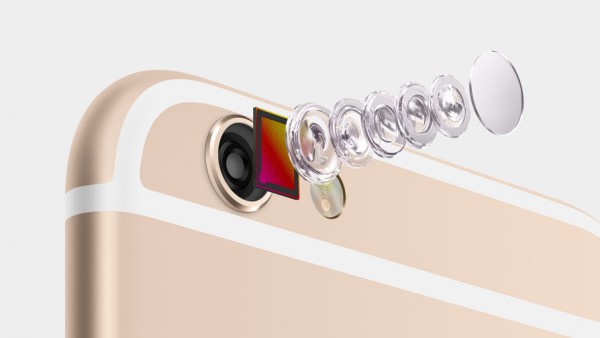The new iPhone 6 and iPhone 6 Plus will finally be available in stores tomorrow, but before you head on to places that sell the phone or before you decide to purchase one from someone else, there is one very important (and judging by their retail prices, somewhat life-changing) decision to make.
Which iPhone 6 should you pick?
Last year when Apple launched two new iPhones – the iPhone 5s and iPhone 5c, it was pretty easy to pick which one to buy. You either choose the more premium version (iPhone 5s) with a more expensive price tag or the “more affordable” variant (iPhone 5c) that is made from plastic and has a more “fun” feel. This time round, with the two iPhones being so similar, how do you decide which one to pick?
Both iPhone 6 models are generally the same. They have the same premium aluminium unibody build, and are both equally powerful with have more or less the same hardware under their hood. Besides the obvious size difference of 4.7” screen on the iPhone 6 and 5.5” on the iPhone 6 Plus, the iPhone 6 Plus’ rear camera has optical image stabilisation (OIS) and a special landscape mode catered for the larger screen. The battery also has a larger capacity and lasts longer than the iPhone 6.
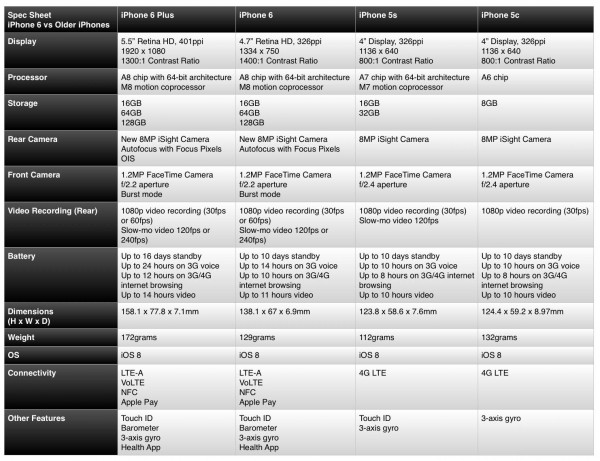 Comparison of all the iPhones in the market right now
Comparison of all the iPhones in the market right now
But do you really need such a large screen? Does OIS make such a huge difference that you are willing to pay more for?
You should get an iPhone 6 if…
…you’re an existing iPhone user who’s used to the small screen. iPhone users are used to a small form factor that can be used with one hand, so going from 4” to 5.5” on the iPhone 6 Plus really is a big jump. Sure, there is the Reachability gesture that somewhat helps with navigation, but holding to a device that is significantly larger than what you’re used to can be tricky too – you wouldn’t want your spanking new device to kiss the floor on your first day of using it, would you?
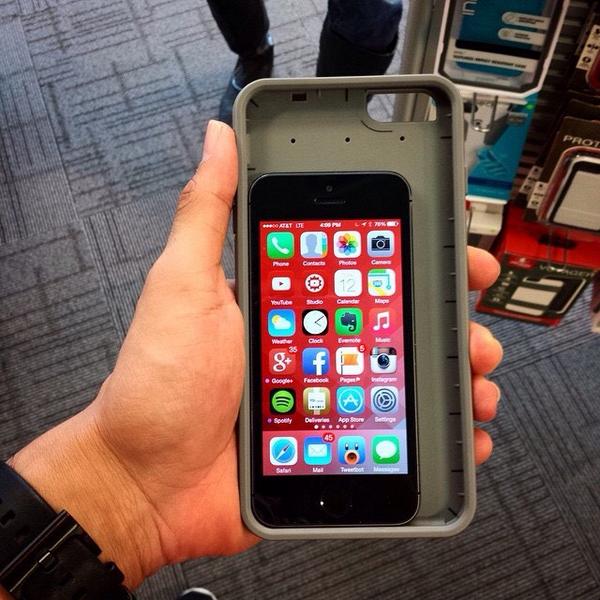 Image Credit: @VaarishM showing the iPhone 5s inside an iPhone 6 Plus case. Woah!
Image Credit: @VaarishM showing the iPhone 5s inside an iPhone 6 Plus case. Woah!
…you have an iPad mini or plan to get an iPad mini. The iPhone 6 Plus has a 5.5” screen, while the iPad mini has a 7.9” display. Do you really need two huge devices? Use the iPhone 6 for normal tasks like to make calls, send messages and take pictures, and save other tasks like watching videos, editing documents and presentations, as well as sending emails for the iPad mini. Plus, if you’re on Maxis or U Mobile, you can have multiple SIM cards for one mobile line so you can seamlessly share your data across your iPhone 6 and iPad mini.
iPhone 6 (left) vs iPhone 6 Plus (right)
…you’re used to keeping your phone in your pockets. Unless you wear cargo pants most of the time or have big pockets, the iPhone 6 Plus will not fit well at all. You either stick to those slim-fit jeans, or make do with putting your phone in your handbags (or man-bags). The iPhone 6 Plus is huge: measuring at 158.1 x 77.8 x 7.1mm, that’s taller than the 5.7” Samsung Galaxy Note 4 (153.5 78.6 x 8.5mm).
You should get the iPhone 6 Plus if…
…you absolutely need a larger screen. If you rely on your mobile for work, if you browse the Internet (or Facebook or Twitter) very frequently and watch lots of videos on the go, then get the iPhone 6 Plus. The big screen with a higher resolution display would definitely be a treat for your eyes. Moreover, the Landscape Mode virtually turns the iPhone 6 Plus into an iPad Mini, giving you the perfect mobile interface for all your work needs.
…you would like a (slightly) better camera. Apart from size difference, the iPhone 6 Plus also has a slightly better camera, with the inclusion of optical image stabilization (OIS). This means that low light pictures will be a lot better, while motion in videos will be significantly improved. If you prize these two aspects, get the iPhone 6 Plus. It must be noted here that the iPhone 6 camera is just as great, so if photography or videography isn’t a big deal for you, stick to the smaller phone. After all, you may have to pay up to an extra RM400 just for a larger screen and OIS. Moreover, the iPhone 6’s camera also has a software-based stabilization mode that should suffice for normal users.
…you travel frequently. With a bigger screen, you can get a lot more done while you’re on the go, and a better camera means you can capture better images of your travels. Moreover, the iPhone 6 has a bigger battery capacity too that is (according to Apple) significantly longer lasting than the iPhone 6. It can last up to 16 days on standby, up to 24 hours on 3G voice, and up to 12 hours on 3G/4G internet browsing.
Both iPhone 6 are great devices that feature a whole bunch of upgrades from previous generation iPhones, and it is safe to say these are the best iPhones ever made – even if their designs leave a lot to be desired.
As we mentioned earlier, both iPhone models are virtually identical in hardware, with a brand new A8 processor and a new M8 motion coprocessor. Even the rear camera are basically the same, with the exception of OIS on the iPhone 6. Both iSight cameras still have the new Focus Pixels technology, which again improves on what is already an excellent all-round camera.
At first glance, the two iPhones appear to be startlingly similar and looks like it is difficult to choose one over the other, but a closer look shows that they are both catered to very different user groups.
For those of you who are going to get the new iPhone 6 / iPhone 6 Plus, have you made up your mind on which one you’d like to get yet? Let us know which one you pick and why below!

